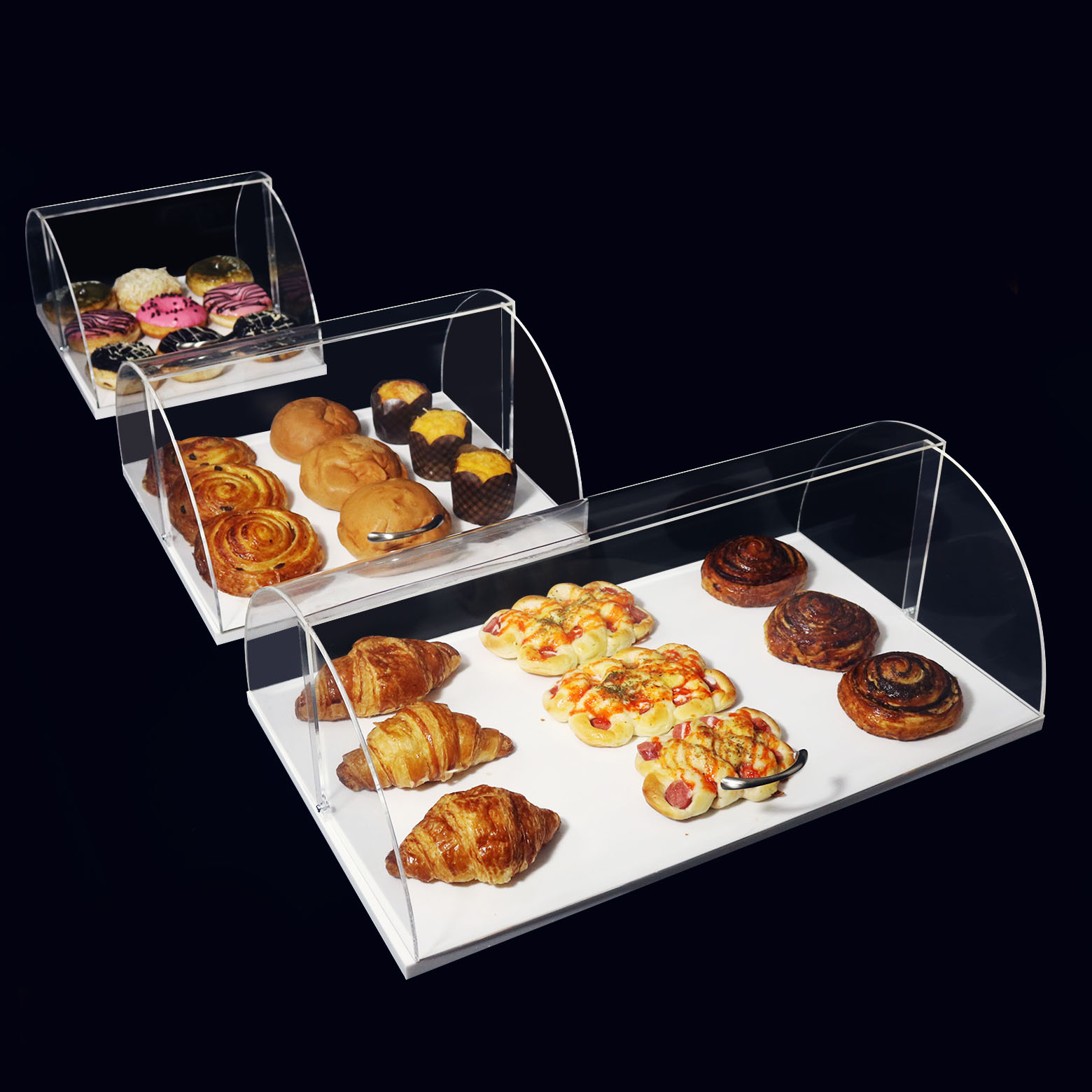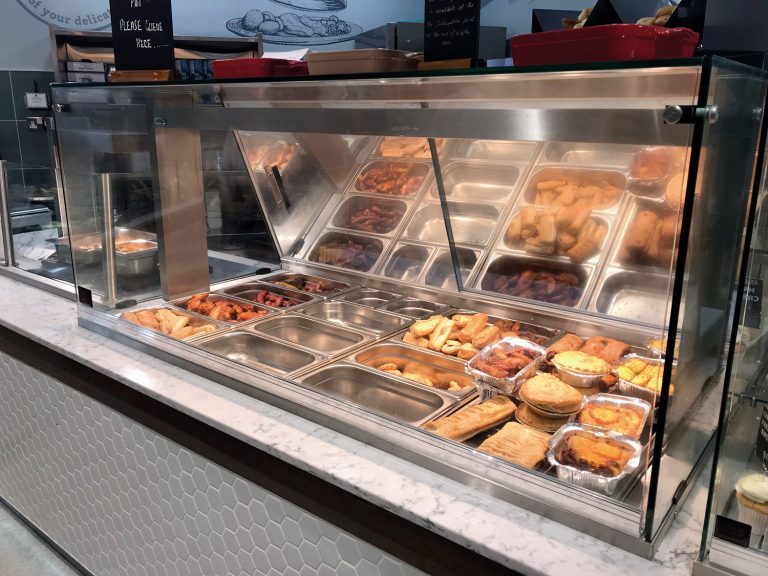Food display, an art form that tantalizes the eyes and taste buds, has evolved into a culinary masterpiece. From visually appealing arrangements to innovative techniques, food display has become an integral part of the dining experience, enhancing its ambiance and creating lasting memories.
Whether it’s a casual gathering or a grand celebration, food displays have the power to transform an ordinary meal into an extraordinary feast. They not only showcase the culinary skills of the chef but also reflect the culture, traditions, and creativity behind each dish.
Visual Appeal and Aesthetics: Food Display

In the culinary realm, the adage “we eat with our eyes first” holds true. Visual appeal plays a pivotal role in the overall dining experience, tantalizing taste buds and creating a lasting impression.
Color
Color is a powerful tool in food displays, evoking emotions and conveying messages. Vibrant hues, such as scarlet strawberries or emerald spinach, attract attention and stimulate appetite. Contrasting colors, like black olives against white cheese, create a striking visual impact that enhances the presentation.
Texture
Texture adds depth and dimension to food displays. Smooth and creamy sauces contrast with crispy croutons or crunchy vegetables, creating a pleasing textural interplay. The contrast between soft and firm, smooth and rough, adds interest and enhances the overall sensory experience.
Lighting
Lighting plays a crucial role in highlighting the visual appeal of food. Natural light is ideal, but artificial lighting can be used to create specific effects. Warm lighting, for example, can make food appear more inviting and appetizing, while cooler lighting can create a more sophisticated ambiance.
Examples of Visually Appealing Food Displays
A visually appealing food display is a symphony of color, texture, and lighting. Consider a colorful fruit salad arranged in a spiral pattern, with contrasting colors of strawberries, blueberries, and kiwi. A charcuterie board adorned with cured meats, artisanal cheeses, and olives, all arranged in a visually pleasing manner, creates a stunning presentation.
A simple dish of grilled salmon, paired with roasted vegetables and a vibrant lemon wedge, becomes a work of art with careful attention to color and texture.
Creative and Innovative Techniques

In the realm of food display, innovation reigns supreme. Chefs and culinary artists push the boundaries of creativity, employing unconventional techniques and materials to create captivating and unforgettable visual experiences. From the use of unique props to the incorporation of unexpected garnishes, these techniques elevate food displays to the level of art.
One innovative technique involves the use of edible flowers. These delicate blossoms add a touch of elegance and vibrancy to any dish. They can be used as garnishes, scattered on plates, or even incorporated into the food itself, creating a stunning and flavorful presentation.
Use of Unique Materials
Chefs are constantly exploring new and unexpected materials to create eye-catching food displays. One such material is slate. Its dark, natural surface provides a dramatic backdrop for colorful dishes, enhancing their visual appeal. Another unique material is wood. Its rustic charm adds a touch of warmth and authenticity to food presentations.
Props and Garnishes
Props and garnishes play a vital role in creating visually appealing food displays. Props such as miniature figurines, vintage utensils, or even natural elements like stones or branches can add a touch of whimsy and intrigue. Garnishes, such as microgreens, edible flowers, or citrus zest, provide pops of color and texture, elevating the overall aesthetic.
Examples of Creative Displays
One notable example of a creative food display is the “Molecular Sushi” by renowned chef Grant Achatz. This dish features sushi transformed into tiny spheres, presented on a bed of edible flowers and microgreens. Another innovative display is the “Deconstructed Caesar Salad” by chef Wylie Dufresne.
This dish presents the classic salad in a modern and artistic way, with each ingredient arranged separately on a plate, creating a visually striking composition.
Functionality and Practicality
Functionality in food displays is crucial to ensure both the accessibility and hygiene of the food items. Accessibility is vital for guests to easily select and retrieve the food they desire, while hygiene considerations prevent contamination and maintain food safety.
Easy Access
Food displays should be designed with easy access in mind. This means that the food should be placed at a convenient height and within easy reach of guests. There should be enough space between the food items to allow guests to easily grab what they want without knocking over other items.
Hygiene Considerations
Hygiene is of utmost importance in food displays. The food should be protected from contamination by dust, insects, and other potential hazards. This can be achieved by using sneeze guards, lids, or other barriers. The food should also be kept at the proper temperature to prevent spoilage.
Examples of Functional and Practical Food Displays
Here are some examples of functional and practical food displays:
- A buffet table with sneeze guards to protect the food from contamination.
- A salad bar with individual compartments for different ingredients, making it easy for guests to customize their salads.
- A dessert display with tiered shelves to provide easy access to all the desserts.
By following these tips, you can create food displays that are both functional and practical, ensuring that your guests have a positive dining experience.
Cultural Influences and Traditions
Cultural influences and traditions play a significant role in shaping food displays. Different cultures have unique ways of presenting food, influenced by factors such as religious beliefs, social customs, and regional ingredients.
For example, in traditional Chinese cuisine, food is often arranged in a visually appealing manner, with dishes placed in a specific order and colors used to represent harmony and balance. In contrast, in some African cultures, food is typically served in communal bowls, reflecting the importance of sharing and community.
Examples of Culturally Diverse Food Displays
- Japanese Kaiseki:A traditional multi-course meal that emphasizes the use of seasonal ingredients and artistic presentation.
- Indian Thali:A platter consisting of several small bowls containing different dishes, representing a balanced meal.
- Mexican Taco Bar:A buffet-style spread where guests can customize their tacos with a variety of toppings.
- French Charcuterie Board:A selection of cured meats, cheeses, and other delicacies arranged on a wooden board.
Marketing and Promotion

Food displays play a significant role in marketing and promotion strategies within the food industry. They captivate customers’ attention, stimulate their appetite, and entice them to make purchases.
Social media and photography have become invaluable tools for showcasing food displays. Visually appealing images and videos of mouthwatering dishes can be shared widely, reaching a vast audience and generating buzz around a brand or product.
Successful Marketing Examples, Food display
- McDonald’s:The iconic “Golden Arches” display serves as a recognizable symbol of the brand and has been effectively used in advertising campaigns.
- Starbucks:The intricate and colorful latte art displayed on cups has become a signature marketing element, enhancing the customer experience and promoting the brand’s coffee creations.
- Domino’s:The “Pizza Theater” concept allows customers to watch their pizzas being made, providing a unique and interactive display that emphasizes the freshness and quality of the product.
Special Occasions and Events
Food displays play a pivotal role in elevating special occasions and events, transforming them into unforgettable experiences. By meticulously arranging culinary delights, these displays create an ambiance that captivates guests and sets the tone for a memorable celebration.
For weddings, food displays become a centerpiece, reflecting the couple’s style and preferences. Elaborate dessert tables laden with intricate cakes, delicate pastries, and artisanal chocolates create a sense of opulence and sweetness. Cocktail hours feature artistic platters of hors d’oeuvres, each bite-sized morsel designed to tantalize taste buds and stimulate conversation.
Parties
Food displays for parties are equally important, catering to the festive atmosphere. From vibrant fruit platters adorned with edible flowers to savory charcuterie boards overflowing with cured meats, cheeses, and artisanal crackers, these displays provide a feast for both the eyes and the palate.
Other Special Events
Beyond weddings and parties, food displays enhance the ambiance of various special events. Corporate gatherings feature sophisticated buffet spreads that cater to diverse dietary needs and preferences. Holiday celebrations are adorned with festive treats, such as gingerbread houses and elaborate cookie platters, creating a warm and inviting atmosphere.
Key Questions Answered
What are the key elements of an effective food display?
Visual appeal, functionality, and creativity are the cornerstones of an effective food display.
How can I improve the visual appeal of my food displays?
Experiment with color, texture, lighting, and composition to create visually stunning displays that draw the eye.
What are some innovative techniques for food displays?
Use unique materials, props, and garnishes to create eye-catching and original displays that leave a lasting impression.
How can I incorporate cultural influences into my food displays?
Explore different cultures and traditions to find inspiration for unique and authentic food presentation styles.
What role does food display play in marketing and promotion?
Food displays are a powerful marketing tool, showcasing dishes in an appetizing and visually appealing way that entices customers.
